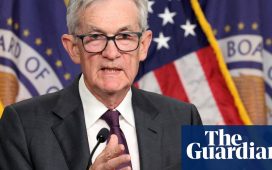Inflation was hotter than expected across the US last month as it continues to fall back from its highest levels in a generation.
Price growth dropped to an annual rate of 3.1% in January, according to official data; above economists’ expectations of 2.9%. In December, the consumer price index stood at 3.4%.
The latest official data sparked a sell-off on Wall Street, with the S&P 500 falling 1.3% and the Dow Jones industrial average dropping 1.1%.
Stock markets have scaled record highs in recent weeks as investors grew more confident about the easing of inflation and some of the US’s largest companies released robust results.
While inflation has fallen sharply since peaking above 9% in June 2022, many Americans are still feeling the pinch. Joe Biden, who is standing for re-election in November, must persuade them that the economy is working for them.
On a monthly basis, the consumer price index rose by 0.3% in January, up from 0.2% the previous month and also higher than the 0.2% expected.
The so-called “core” index, which strips out volatile food and energy prices, is closely watched as it tends to provide a better indication of inflation’s trajectory. It also increased on the month, from 0.3% to 0.4%.
The US Bureau of Labor Statistics, which releases the data each month, said the index was driven higher in January by the rising cost of shelter, including rent; motor vehicle insurance; and medical care.
The US economy has remained robust in recent years, adding millions of jobs and defying predictions of recession even as the Federal Reserve has embarked upon an aggressive campaign to take on inflation. Employers added 353,000 jobs last month alone.
Many Americans have not been feeling positive about the economy, as they grapple with their own financial realities. A closely watched survey by the University of Michigan indicated a rallying in consumer confidence last month, however, with sentiment jumping to its highest level since July 2021.
after newsletter promotion
Now that annual inflation is easing back towards 2%, Fed policymakers are preparing to cut interest rates for the first time in four years. Wall Street had been betting that the central bank would start doing so as soon as May, after the Fed chairman, Jerome Powell, signaled that a cut was unlikely next month.
Paul Ashworth, chief North America economist at Capital Economics, said January’s unexpectedly strong reading will reinforce the view in some quarters that the “last mile is the hardest” as inflation comes back down to earth.
Prices in key categories like clothing and medical care commodities did fall last month, however. “There is still plenty of disinflation in the economy,” Ashworth noted.








